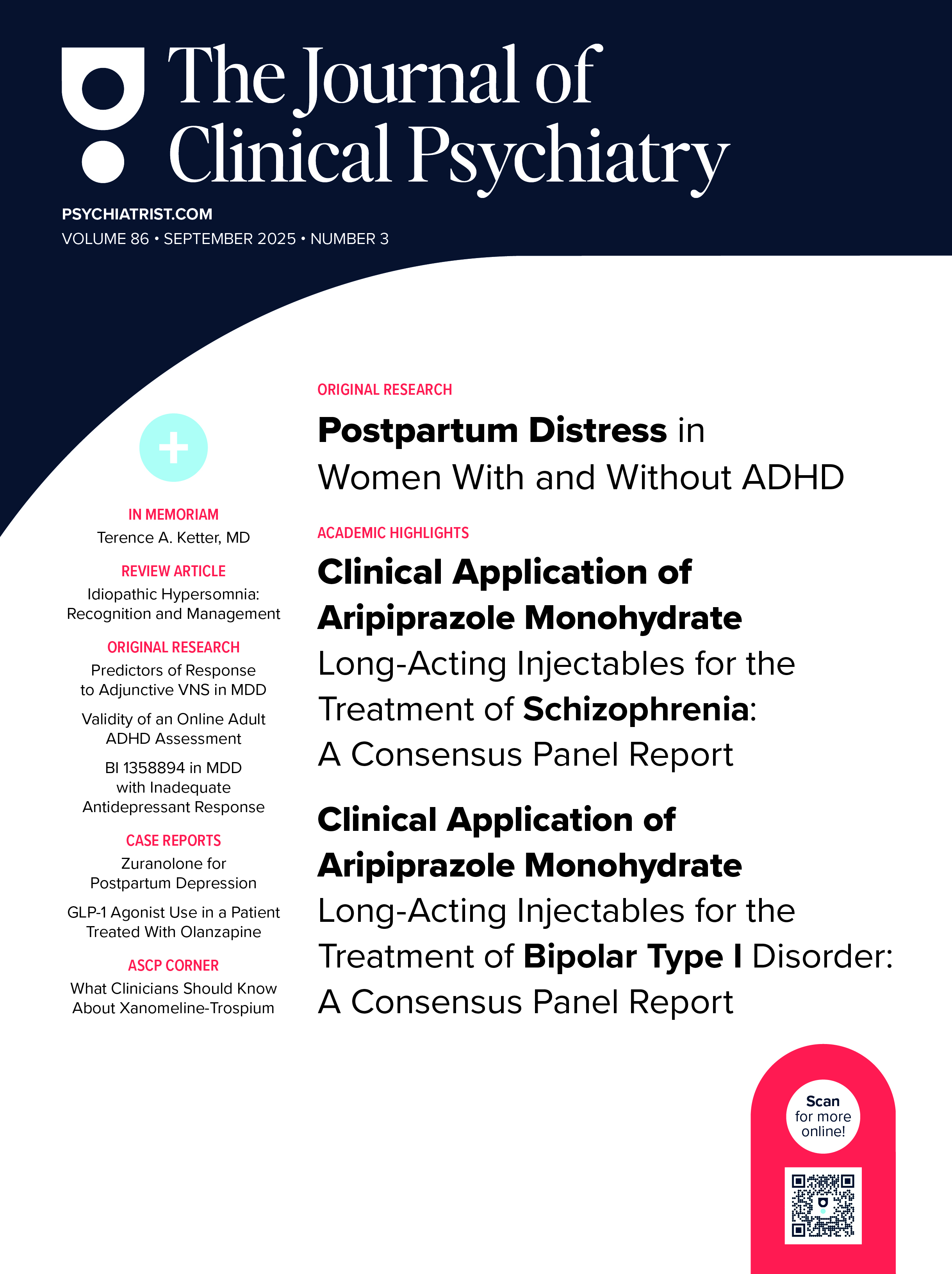Background: Bipolar disorder is challenging to diagnose in medical practice.
Objectives: Our objectives were (1) to determine the rate of depression misdiagnosis in patients previously diagnosed with bipolar disorder in administrative claims, (2) to determine the resulting increased treatment costs, and (3) to verify the misdiagnoses in the medical charts for a subset of patients.
Method: We employed cohort analysis using claims from a large, commercial, U.S. health plan from January 2001 through December 2003. Inclusion criteria included 2 bipolar disorder diagnoses (ICD-9-CM criteria), continuous enrollment for 1 year before and after initial bipolar disorder diagnosis, age 18-64 years, and a pharmacy benefit. Propensity scoring was used to control for differences between patients with and without 2 depression diagnoses in the year following their bipolar disorder diagnosis. Medical charts were obtained for 100 patients, including 76 with a bipolar disorder diagnosis chart from one provider and a depression diagnosis chart from a second provider.
Results: Of 3119 bipolar disorder patients meeting inclusion criteria, 857 (27.5%) had subsequent depression misdiagnoses during the follow-up year. These patients had 1.82 times more psychiatric hospitalizations and 2.47 times more psychiatric emergency room visits. For 673 patients (78.5%), a different provider gave the depression misdiagnosis. Annual per-patient treatment costs were significantly higher (p < .001) for those diagnosed with depression ($12,594) than for those not ($9405). In the chart review, both the bipolar disorder and subsequent depression diagnoses were confirmed for 65.8% (50/76) of the patients who had charts from 2 different providers.
Conclusions: More than one quarter of individuals diagnosed with bipolar disorder received an ostensible depression misdiagnosis during the follow-up period. Significant (p = .001) increases in psychiatric inpatient hospitalization suggest that improvements in the continuity of care could improve outcomes and reduce costs.
Please sign in or purchase this PDF for $40.00.




